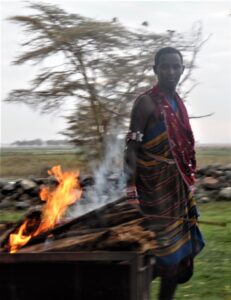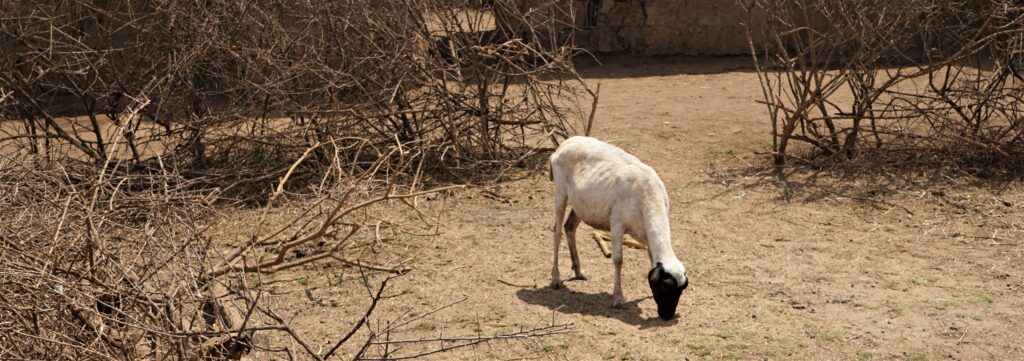» posted on Sunday, September 18th, 2022 by Linda Lou Burton
The Dimming Of The Day
Linda Lou Burton posting from Amboseli Serena Safari Lodge, Amboseli National Park,  Kenya– It was our last night in Kenya, our last night with Abdi. Tomorrow we crossed the border into Tanzania; tomorrow we got new drivers; a new guide. The gang of us was seated semi-circle, our chairs in perfect position on the lawn of the Lodge to watch the sun set on mighty Kilimanjaro in a blaze of orange and red, relaxing at the end of our safari day with G&T in hand. Sundowners: a British tradition. Tonight however, the sunset was missing.
Kenya– It was our last night in Kenya, our last night with Abdi. Tomorrow we crossed the border into Tanzania; tomorrow we got new drivers; a new guide. The gang of us was seated semi-circle, our chairs in perfect position on the lawn of the Lodge to watch the sun set on mighty Kilimanjaro in a blaze of orange and red, relaxing at the end of our safari day with G&T in hand. Sundowners: a British tradition. Tonight however, the sunset was missing.
The mountain was socked in, invisible. The colors tonight, beyond the blaze of the campfire, beyond the green of the swamp and the brown dust of the fields beyond that, was gray; a gloomy look. Abdi spoke of new friendships, new insights gained; urging us to tell others, back home, about Kenya. Amos spoke, reminding us of realities we’d witnessed for ourselves in Amboseli; the images of the day flashed through my mind, the contrasts. 
So much to think about, so much to remember. The gang of us on safari, plus our guide Abdi standing, driver Amos 3rd from right. 
A Brief History of Amboseli National Park
Amboseli National Park is 97,117 acres in size at the core of a 1,976,843-acre ecosystem that spreads across the Kenya-Tanzania border. The park protects two of five main swamps, and includes a dried-up Pleistocene lake and semiarid vegetation. The local people are mainly Maasai.
It was 1883 when European Jeremy Thompson first penetrated the Maasai region known as Empusel (meaning ‘salty, dusty place’ in Maa); he was astonished by the fantastic array of wildlife and the contrast between the arid areas of the dry lake bed and the oasis of the swamps, a contrast that persists today. Amboseli was set aside as the Southern Reserve for the Maasai in 1906, but returned to local control as a game reserve in 1948. Gazetted a national park in 1974 to protect the core of this unique ecosystem, it was declared a UNESCO site in 1991. In 2005, Kenyan President Mwai Kibaki declared that control of the park should pass from the Kenya Wildlife Service to the Olkejuado County Council and the Maasai tribe; legal challenges are currently in court. The degazetting would divert park admission fees directly to the county council with shared benefits to the Maasai immediately surrounding the park.














